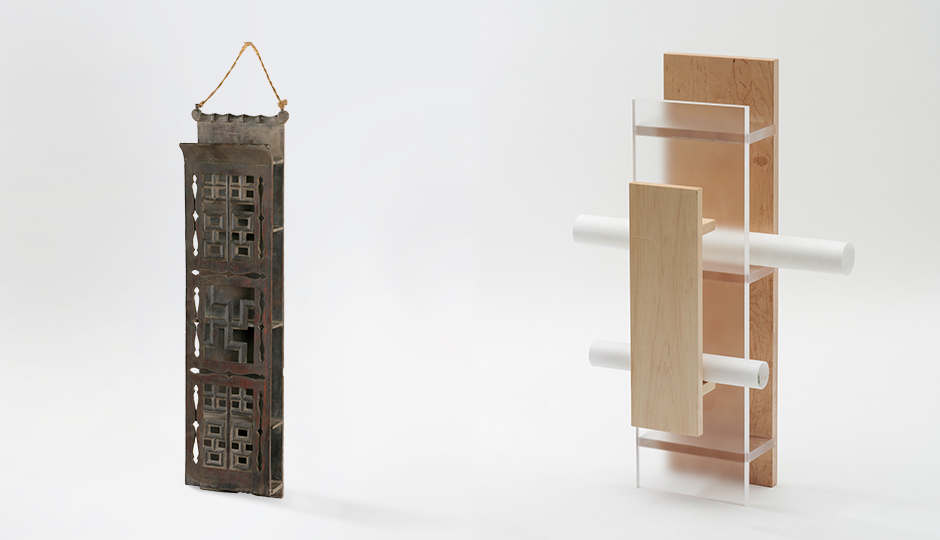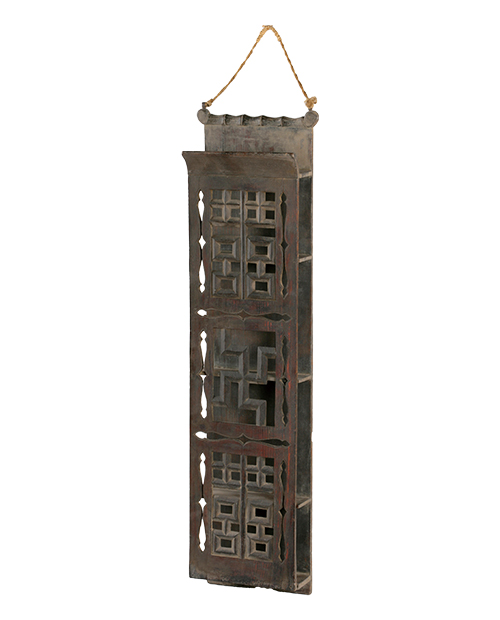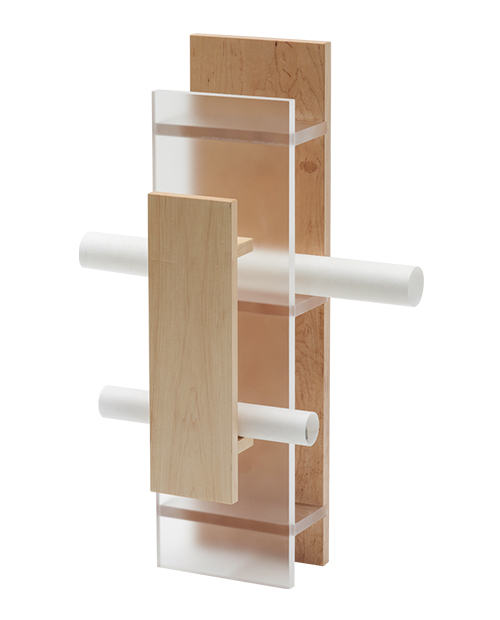
Furniture designed to store the communiques
among scholars
-

Gobi, the Joseon Dynasty period
-

Gobi, Kim Hyun Soo
Scholars during the Joseon Dynasty expressed and exchanged their feelings among their families and friends. They also built friendships, showed their affection, and shared their thoughts through letters. The “Confucian Scholar’s Daily Routine”, which outlines the daily routine a scholar is expected to follow, states that “writing letters to close friends” should be done between 11:00 and 13:00. That goes to show just how important letters were as a means of communication. Naturally, these scholars needed a dedicated piece of furniture in their study to keep all of their letters safe. “Gobi” is a piece of furniture that is hung on the wall. It is made with thin sheets of wood, and it is approximately the width of a fist. Inside, the box is divided into two or three compartments to help the owner keep paper scrolls placed horizontally. Gobi is usually made with light wood (e.g., paulownia or pine), and more often than not, it features carvings of plum blossoms or bamboo on the front panel.
In other words, Gobi for the study was on a simpler and weightier side to create a tempered, moderate look. It is unique to Korean culture, and it cannot be found in China and Japan. Recently, artist Kim Hyun Soo showcased his take on the traditional Gobi with a lighted bookshelf. It is a reinterpretation of the aesthetics of a traditional Gobi infused with modern functions and sculpting techniques. Kim used satin acrylic to reflect the silhouette when an object inside the bookshelf appears as a decorative item. He also added light to make the bookshelf more practical.
